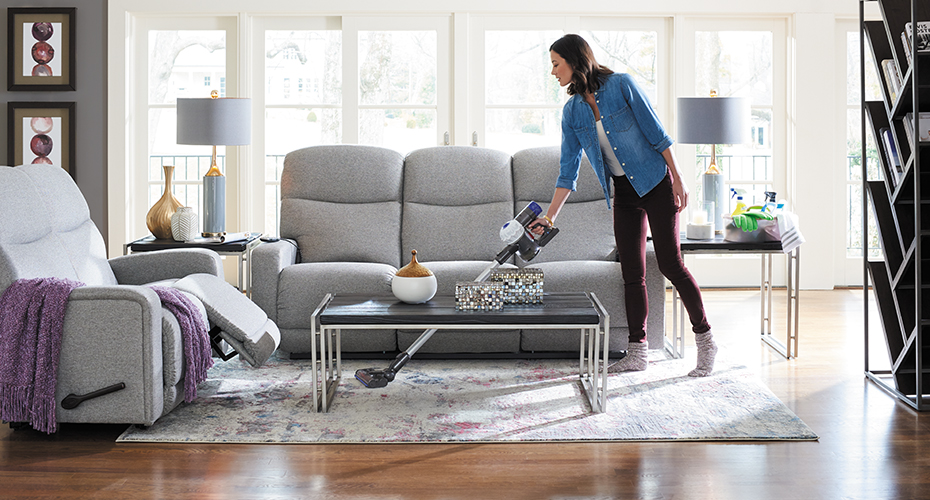Your furniture is more than just functional pieces in your home; they are investments that contribute to your comfort and style. Proper care and maintenance are crucial to ensuring that these investments last for years and continue to look their best. From regular cleaning to addressing minor repairs, taking care of your furniture can significantly extend its lifespan and keep it looking pristine. Here’s a comprehensive guide on how to care for and maintain your furniture from quality furniture shop gwynedd.
1. Regular Cleaning
Upholstered Furniture:
- Vacuum Regularly: Use a vacuum cleaner with a brush attachment to remove dust and dirt from upholstered furniture. This prevents particles from settling into the fabric and causing wear.
- Spot Clean Stains: Address spills and stains promptly with appropriate cleaners. For fabric upholstery, use a mild detergent mixed with water, and blot (do not rub) the stain. For more stubborn stains, consult the manufacturer’s care instructions or consider professional cleaning.
- Deodorize: Occasionally sprinkle baking soda on upholstery to neutralise odours. Let it sit for 15-30 minutes before vacuuming it up.
Wood Furniture:
- Dust Frequently: Use a soft, dry cloth or a microfiber duster to remove dust from wooden surfaces. Regular dusting prevents buildup that can scratch or damage the finish.
- Clean with Care: For deeper cleaning, use a wood cleaner recommended the manufacturer. Apply it with a soft cloth and follow the grain of the wood to avoid streaks.
- Avoid Excess Moisture: Wipe up spills immediately with a dry or slightly damp cloth to prevent water damage. Avoid using excessive moisture or harsh chemicals that can strip the finish.
Leather Furniture:
- Dust and Vacuum: Regularly dust leather surfaces and vacuum any crevices to remove debris.
- Condition: Use a leather conditioner every 6-12 months to keep the leather supple and prevent cracking. Apply the conditioner with a soft cloth and follow the product instructions.
- Protect from Sunlight: Direct sunlight can cause leather to fade and dry out. Place your leather furniture away from windows or use window coverings to shield it from harsh rays.
2. Protecting Your Furniture
From Sunlight and Heat:
- Use Protective Covers: For wood and upholstered furniture, use covers or place furniture away from direct sunlight to prevent fading and drying.
- Avoid Heat Sources: Keep furniture away from heat sources like radiators and fireplaces, which can cause warping, cracking, or drying out.
From Spills and Stains:
- Use Coasters and Trivets: Prevent water rings and heat damage on wooden tables using coasters for drinks and trivets for hot dishes.
- Use Furniture Protectors: Apply furniture protectors like felt pads on the bottom of chairs and tables to prevent scratches on floors and surfaces.
From Pets:
- Use Pet Covers: Protect your upholstery from pet hair, claws, and accidents using removable covers or throws.
- Regular Grooming: Regularly groom pets to reduce shedding and prevent hair from embedding into the furniture.
3. Addressing Minor Repairs
Scratches and Dents:
- Wood Furniture: Use a wood filler or wax crayon that matches the furniture color to fill in minor scratches. For deeper scratches, you might need to sand and refinish the affected area.
- Upholstery: For small tears or snags, use fabric repair kits designed for upholstery. Follow the kit instructions for best results.
Loose Joints:
- Tighten Screws and Bolts: Periodically check and tighten any screws, bolts, or joints that may become loose over time. Use the appropriate tools and avoid over-tightening to prevent damage.
Discoloration:
- Wood Furniture: If wood furniture becomes discoloured, use a wood polish or a restorative product recommended for the specific type of wood.
- Upholstery: For upholstery discoloration, consult with professional cleaners or use upholstery-specific products designed to address fading or staining.

4. Seasonal Maintenance
Spring and Fall Cleaning:
- Thorough Cleaning: Perform a more thorough cleaning of your furniture during spring and fall. This includes deep cleaning upholstery, polishing wood surfaces, and conditioning leather.
- Inspect for Damage: Check for any wear and tear or damage that may need addressing. Early detection can prevent more significant issues later on.
Humidity Control:
- Use a Humidifier or Dehumidifier: Maintaining the right level of humidity in your home can prevent wood furniture from expanding or contracting due to changes in moisture levels.
5. Professional Help
For certain types of furniture and repairs, it’s best to seek professional help. This includes:
- Antique or High-Value Furniture: For valuable or antique pieces, consult with a professional restorer or upholsterer to ensure proper care and maintenance.
- Complex Repairs: If you encounter complex repairs or significant damage, a professional can provide expert solutions and prevent further issues.
Conclusion
Proper care and maintenance of your quality furniture can greatly enhance its longevity and appearance. By incorporating regular cleaning routines, protecting your pieces from damage, addressing minor repairs promptly, and seeking professional assistance when needed, you can ensure that your furniture remains a beautiful and functional part of your home for years to come. With these practices, you’ll not only preserve the quality of your furniture but also maintain the comfort and style that make your home uniquely yours.



